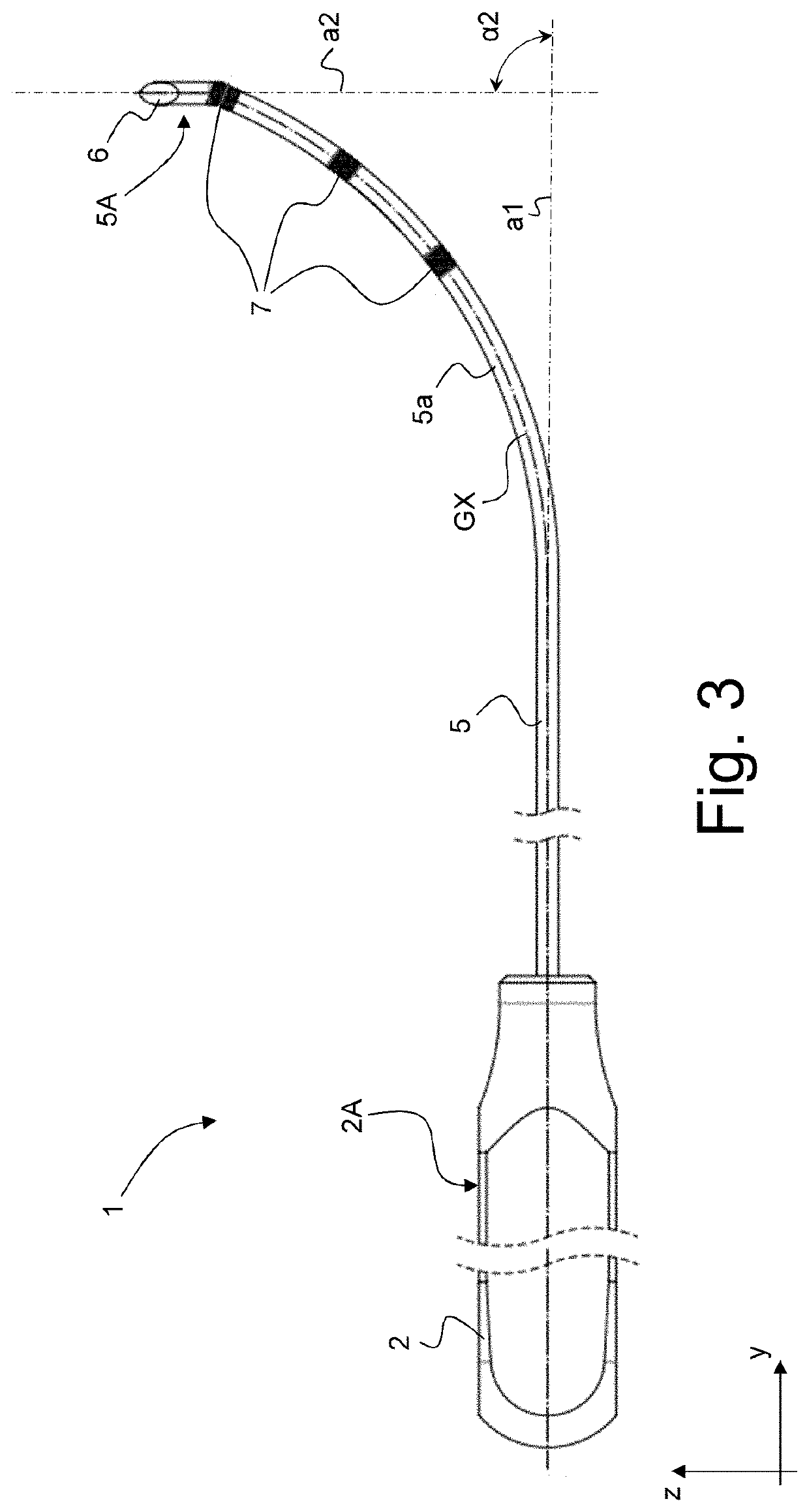Medical instrument for percutaneous release procedures
a technology of percutaneous release and medical instruments, applied in the field of medical instruments for percutaneous release procedures, can solve the problems of unsatisfactory solutions, unsatisfactory configurations, and unwanted damage to surrounding tissues and structures
- Summary
- Abstract
- Description
- Claims
- Application Information
AI Technical Summary
Benefits of technology
Problems solved by technology
Method used
Image
Examples
second embodiment
[0106]Referring to FIGS. 11 to 20, there is shown another embodiment of a medical instrument, designated by reference numeral 10, in accordance with the present invention, which other embodiment is particularly suited for percutaneous A1 pulley release in the treatment of the trigger finger syndrome (TFS). A variant of this second embodiment, designated by reference numeral 10*, is further shown in FIGS. 28 to 31.
[0107]Further embodiments of the invention are discussed with reference to FIGS. 32 to 43A-C. FIGS. 32 to 37A-C illustrate a further embodiment of a medical instrument 100 that is particularly suited for percutaneous carpal tunnel release in the treatment of the carpal tunnel syndrome (CTS), while FIGS. 38 to 43A-C illustrate another embodiment of a medical instrument 110 that is particularly suited for percutaneous A1 pulley release in the treatment of the trigger finger syndrome (TFS).
[0108]All embodiments share a number of common features, including a handle portion 2, 2...
first embodiment
[0129]Referring more particularly to FIGS. 1 to 10, to the variant of FIGS. 23 to 27, and to the embodiment of FIGS. 32 to 37A-C, one can note that an end section of the elongated rod member 5, 5* resp. 105, at the terminal end 5A, 5A*, resp. 105A, of the second portion, extends substantially perpendicularly to the first direction a1, namely along a second direction a2 that is parallel to the z axis. In other words, angle α2 depicted in FIGS. 3, 23 and 32 is substantially 90°.
[0130]In the illustrated examples, the second portion of the elongated rod member 5, 5*, resp. 105, includes a single curved section 5a, 5a*, resp. 105a, extending over an angle α1 (see FIG. 2 which applies by analogy to the variant of FIGS. 23 to 27 and to the embodiment of FIGS. 32 to 37A-C) that exceeds 60° and a radius of curvature R1 of the curved section 5a, 5a* resp. 105a, is of the order of 30 to 45 mm. By way of illustration, angle α1 and radius of curvature R1 can be selected to equal approximately 68...
PUM
 Login to View More
Login to View More Abstract
Description
Claims
Application Information
 Login to View More
Login to View More - R&D
- Intellectual Property
- Life Sciences
- Materials
- Tech Scout
- Unparalleled Data Quality
- Higher Quality Content
- 60% Fewer Hallucinations
Browse by: Latest US Patents, China's latest patents, Technical Efficacy Thesaurus, Application Domain, Technology Topic, Popular Technical Reports.
© 2025 PatSnap. All rights reserved.Legal|Privacy policy|Modern Slavery Act Transparency Statement|Sitemap|About US| Contact US: help@patsnap.com



